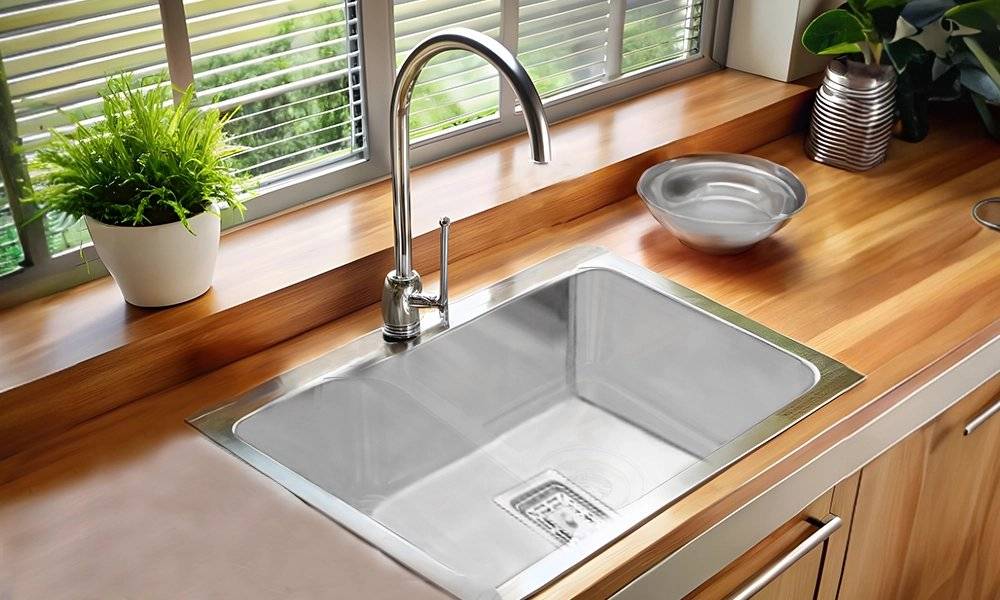
Maintaining Undermount, Drop-In, and Apron Front Kitchen Sinks Like a Pro
Homeowners know that keeping a kitchen in tip-top shape calls for regular maintenance, and the sink is no exception. Whether you have an undermount, drop-in, or apron front kitchen sink, understanding the specific care and maintenance needs of each type will ensure longevity and a pristine appearance. In this blog, we’ll provide you with pro tips and essential practices for maintaining each sink style, focusing on care techniques, cleaning routines, and common issues to watch for.
1. Maintaining Undermount Kitchen Sinks
Undermount kitchen sinks are celebrated for their seamless integration into countertops and modern aesthetic. Proper care helps preserve their appearance and functionality.
Key Maintenance Tips:
1. Regular Cleaning Routine
Daily: Rinse the sink with warm soapy water after each use to remove debris and prevent stains.
Weekly: Use a mixture of baking soda and water to scrub the sink gently, followed by rinsing with vinegar to dissolve any mineral deposits.
2. Preventing Stains and Scratches
Use a soft sponge or cloth rather than abrasive pads to avoid scratching.
Avoid leaving metallic or rust-prone items in the sink for extended periods, as they can transfer rust stains.
3. Care for the Sink’s Edge
Clean the caulking or sealing along the edge regularly to prevent mold or mildew buildup.
Tighten any mounting hardware occasionally to prevent the sink from becoming loose over time.
4. Avoiding Drainage Issues
Regularly use a drain screen to catch debris that can lead to clogs, and clear the screen frequently.
Monthly, use a natural drain cleaner (e.g., a mixture of baking soda and vinegar) to keep pipes clear without harsh chemicals.
2. Maintaining Drop-In Kitchen Sinks
Drop-in kitchen sinks are known for their ease of installation and wide-ranging compatibility with various kitchen styles. While they require less maintenance than some alternatives, regular care prevents dirt accumulation around the rim.
Key Maintenance Tips:
1. Focus on the Rim
Clean the sink edges where it meets the countertop to prevent grime buildup. Use a soft brush or toothbrush with a mild detergent to reach crevices.
2. Routine Cleaning Practices
Rinse the sink regularly with dish soap and warm water, and follow up with a soft sponge.
For deeper cleaning, use a solution of equal parts vinegar and water to disinfect and remove water spots.
3. Protect the Sink Surface
Avoid acidic or harsh chemical cleaners that can damage finishes—choose pH-balanced cleansers instead.
Use sink protectors or grids to protect against scratches and wear on the bottom surface.
4. Addressing Sealant and Caulking
Inspect the sealant around the sink regularly for cracks or wear. Reapply or touch up as needed to maintain an impermeable barrier.
3. Maintaining Apron Front (Farmhouse) Kitchen Sinks
Apron front sinks provide a timeless aesthetic with practical depth and space. Due to their bold design, special care is required to keep them looking their best.
Key Maintenance Tips:
1. Cleaning the Apron
Wipe down the apron front daily, as food splashes or standing water can cause discoloration.
Use a mixture of mild dish soap and water to clean stubborn spots, avoiding harsh chemicals.
2. Preserve Finish and Material
If you have a fireclay sink, avoid high-impact activities as fireclay can be brittle.
Stainless steel varieties should be wiped with microfiber cloths to prevent streaks.
Copper sinks benefit from waxing every few weeks to help maintain the patina and resist water spots.
3. Manage Water Exposure
Use absorbent mats or rugs in front of the sink to protect flooring from splash damage.
Ensure adequate ventilation to prevent moisture buildup, especially between the apron and cabinetry.
4. Monitor and Repair
Inspect the cabinet or support structure regularly for any water damage or sagging, especially in older installations.
General Tips for All Sink Types
1. Regularly Check for Leaks or Drips
Keep an eye out for any signs of dripping faucets or under-sink leaks, as they can cause significant water damage if left unaddressed.
2. Avoid Harsh Chemicals
Harsh drain cleaners and bleach can damage many sink surfaces. Opt for natural alternatives to maintain the sink’s finish without harm.
3. Maintain Faucets and Fixtures
Polish regularly to maintain shine and inspect for limescale buildup, addressing promptly to maintain water flow and hygiene.
4. Freshen Your Sink Naturally
To eliminate odors naturally, grind citrus peels in the garbage disposal (if you have one) or use a bit of lemon juice mixed with baking soda directly in the sink.
5. Establish a Maintenance Schedule
Implementing a weekly cleaning routine will ensure sinks remain clean and functional, reducing the risk of costly repairs.
Maintaining your kitchen sink doesn’t require a ton of effort if you build simple cleaning and care habits into your routine. With the right approach, you’ll ensure that your undermount, drop-in, or apron front sink remains a functional and beautiful part of your kitchen for years to come.



